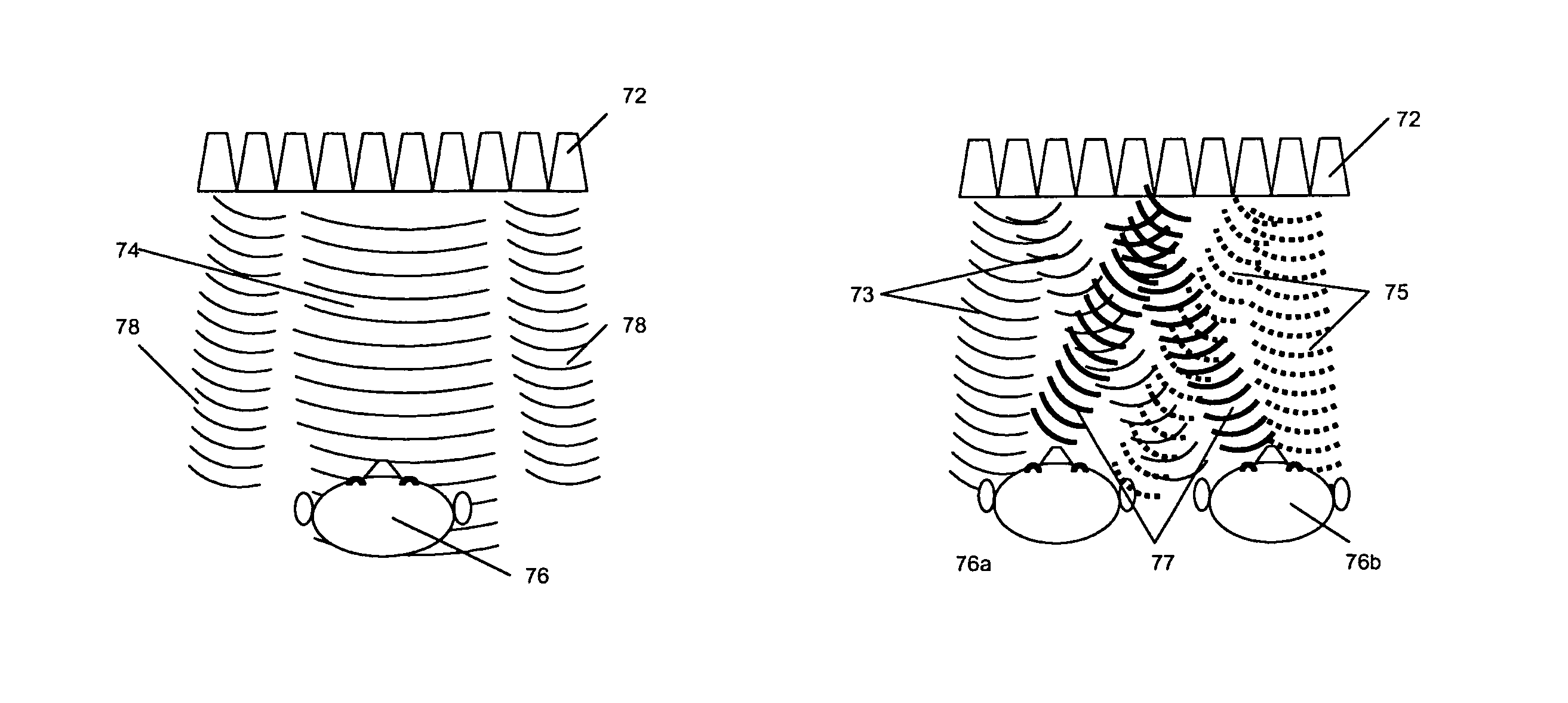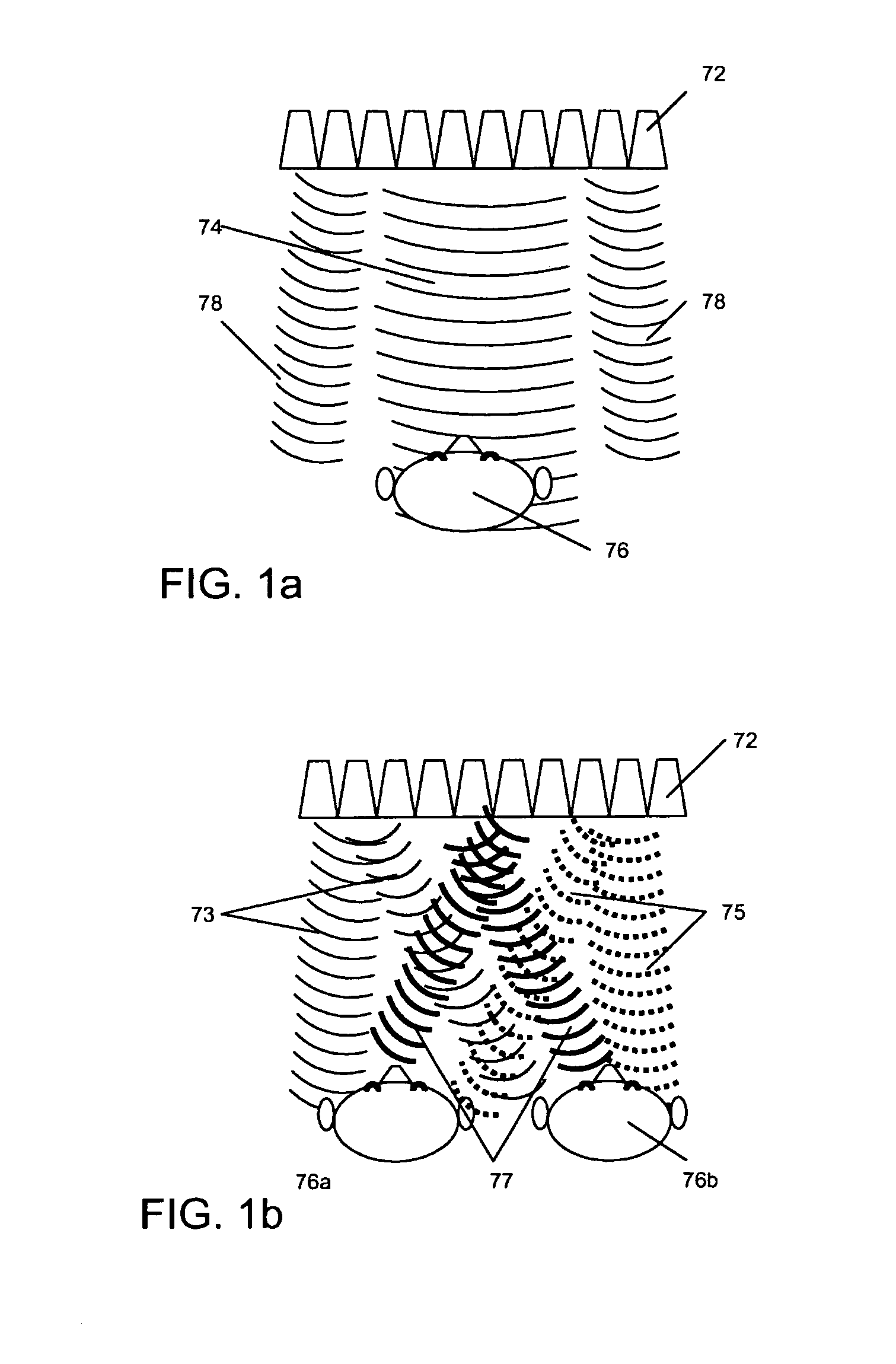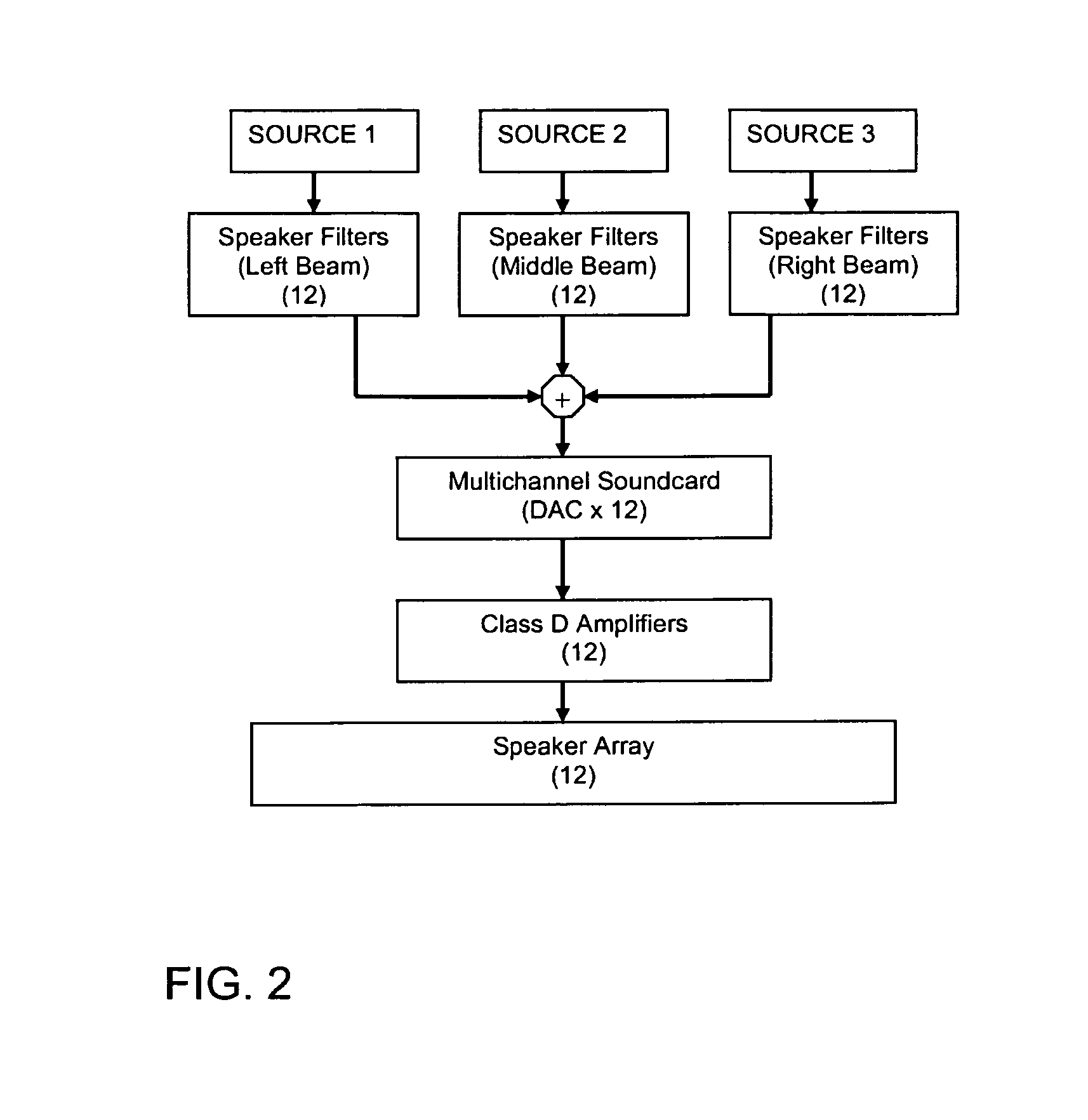Method for controlling a speaker array to provide spatialized, localized, and binaural virtual surround sound
a speaker array and virtual surround technology, applied in the direction of pseudo-stereo systems, stereophonic circuit arrangements, transducer details, etc., can solve the problems of not being able to accommodate the proper specifications, the listener should not be able to tell the difference between the virtual image and the real sound source, and the area can accommodate the proper specifications. , to achieve the effect of superior speaker binaural sound imaging, small size and more portability
- Summary
- Abstract
- Description
- Claims
- Application Information
AI Technical Summary
Benefits of technology
Problems solved by technology
Method used
Image
Examples
Embodiment Construction
[0042]The invention works in two primary modes. In binaural mode, the speaker array provides two targeted beams aimed towards the primary user's ears—one beam for the left ear and one beam for the right ear. The shapes of these beams are designed using an inverse filtering approach such that the beam for one ear contributes almost no energy at the user's other ear. This is critical to provide convincing virtual surround sound via binaural source signals.
[0043]The inverse filter design method comes from a mathematical simulation in which a speaker array model approximating the real-world is created and virtual microphones are placed throughout the target sound field. A target function across these virtual microphones is created or requested. Solving the inverse problem using regularization, stable and realizable inverse filters are created for each speaker element in the array. When the source signals are convolved with these inverse filters for each array element, the resulting beam...
PUM
 Login to View More
Login to View More Abstract
Description
Claims
Application Information
 Login to View More
Login to View More - R&D
- Intellectual Property
- Life Sciences
- Materials
- Tech Scout
- Unparalleled Data Quality
- Higher Quality Content
- 60% Fewer Hallucinations
Browse by: Latest US Patents, China's latest patents, Technical Efficacy Thesaurus, Application Domain, Technology Topic, Popular Technical Reports.
© 2025 PatSnap. All rights reserved.Legal|Privacy policy|Modern Slavery Act Transparency Statement|Sitemap|About US| Contact US: help@patsnap.com



